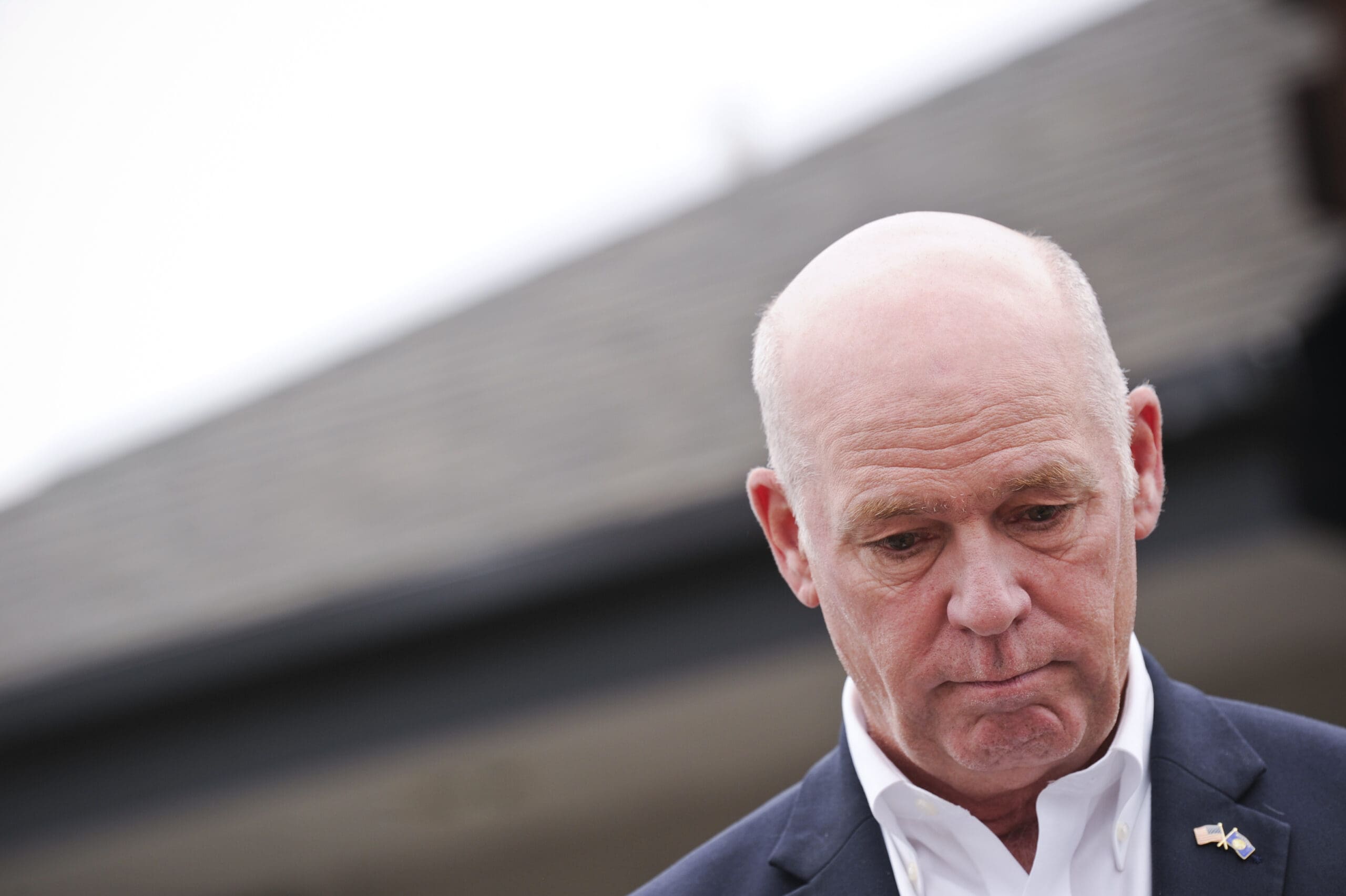While property taxes increased for most Montanans, Gov. Gianforte’s tax bill decreased
The governor’s personal property tax bill dropped by $600, according to analysis of public tax records conducted by the gubernatorial campaign of Democrat Ryan Busse.

Homeowners throughout Montana this month got a shock in the mail: revised property tax bills reflecting steep increases. But then the jolt amped up with a revelation that one of those tax bills actually decreased for Gov. Greg Gianforte on his privately owned house in the mansion district of Helena.
While all of the governor’s neighbors saw increases, one as high as 60%, the governor’s personal property tax bill there dropped by $600, according to analysis of public tax records conducted by the gubernatorial campaign of Democrat Ryan Busse.
Throughout a monthslong running battle over skyrocketing property taxes statewide, charges and countercharges have sown confusion about blame, but the facts of the matter are clear enough: The stiff increases for most homeowners, except for Gianforte, are a direct result of inaction by the Republican-controlled state Legislature and aggressive legal action by the Republican governor. The governor and legislators have repeatedly said otherwise.
“It’s a total disinformation campaign,” said Missoula County Commissioner Josh Slotnick, a Democrat from one of the state’s largest counties, in an interview.
“If the Legislature would have done their job … this issue wouldn’t be on anybody’s agenda right today,” Mike McGinley, a conservative Republican commissioner in rural Broadwater County, said in an interview.
The chain of events supports the commissioners’ claims. Montana has for decades seen rapid growth and heavy upward pressure on housing prices. State officials capture that value through reassessing property, setting the basis for property taxes, but in the past, the Legislature has blunted that increase by reducing the tax rate — a second factor in the equation — so taxes don’t rise as fast as property values. Last year, the legislative committee that does that routine adjustment failed to do so, but also did not publicly debate the issue and offered no explanation for inaction, Slotnick said.
That in turn aimed the problem straight at homeowners, he said. The state has a total of 16 classes of property, of which residential is but one. Because of the complexities of tax assessment, only residential property saw a large increase in its assessed values. All other classes are more or less static. Further, counties are by law capped on the amount of money they can collect from property taxes, so they’re left with no choice but to increase the total paid by residential property owners and decrease the amount paid by the 15 other classes to compensate. Thus homeowners pay more while businesses with a special classification that operate across county lines — such as United Airlines, Northwestern Energy and Verizon — pay less.
Both legislators and Gianforte said all of this was the result of increased local spending, and spending in places like Missoula County did increase. A lot. But Slotnick says all of that increase can be traced to large infusions of federal money for the Inflation Reduction Act and the Bipartisan Infrastructure Law, in effect pass-throughs for specific projects such as roads and sewers. The amount of spending backed by local taxes in his county increased only 5%, less than inflation, he said.
What did increase throughout was a small tax collected by counties and sent to the state for school equalization. The counties had argued that this special tax rate should be reduced to reflect increased property values. Gianforte disagreed, sued and won, forcing counties to collect the extra money, which is why the revised tax bills showing an increase on an earlier increase are showing up this month.
Long-term growth in Montana has made these tax disputes common, but there’s a strange development in this case that has amped up the political consequences. Growth in past years has been concentrated in populous Democratic counties, especially Missoula and Gallatin. No more. The most rapid increases in assessed value in residential property are now in rural counties, and no one seems sure why, but property values are increasing throughout western and central Montana in largely Republican counties, and their commissioners, people like McGinley, are not happy about it.
Slotnik noted that Gianforte in the early years of his administration was always a featured speaker at the annual convention of the Montana Association of Counties, but this year was a no-show.
“Before, when he went to the MACO conference he was received like a saint,” he said. “It was a love fest. Not this year. These county commissioners across the state did not like being thrown under the bus by the governor.”
Gianforte has been trying to tamp this down by frequent appearances on friendly talk radio programs across the state, blaming the bigger tax bills on local government spending. His administration also doled out a rebate of $675 a year for two years to offset the tax increases, but many taxpayers are paying more than $675 in increased taxes, and not all taxpayers knew about the rebate to apply for it.
There’s a related matter that gets almost no attention in this issue, but is a part of the picture: The state entered fiscal year 2024 with a budget surplus of about a billion dollars, about 25% of the total budget. It is forcing local governments to collect more taxes, but leaving a big pile of money dormant, not spending on services.
Dan Bucks was a budget director in a Democratic administration and has followed the fine details of the current controversy. In an interview, he said he believes this is not simply an oversight or mistake by the Gianforte administration, but rather part of a strategy to create a tax revolt and undermine the independence of local governments. By allowing taxes to increase drastically on just residential property and at the same time starving local governments’ ability to provide services, it might see taxpayers come to believe they are paying a lot more for nothing.
“The Legislature has created this public finance crisis in the state that undermines local government and local democracy and overburdens overtaxes of residential homeowners,” Bucks said.



